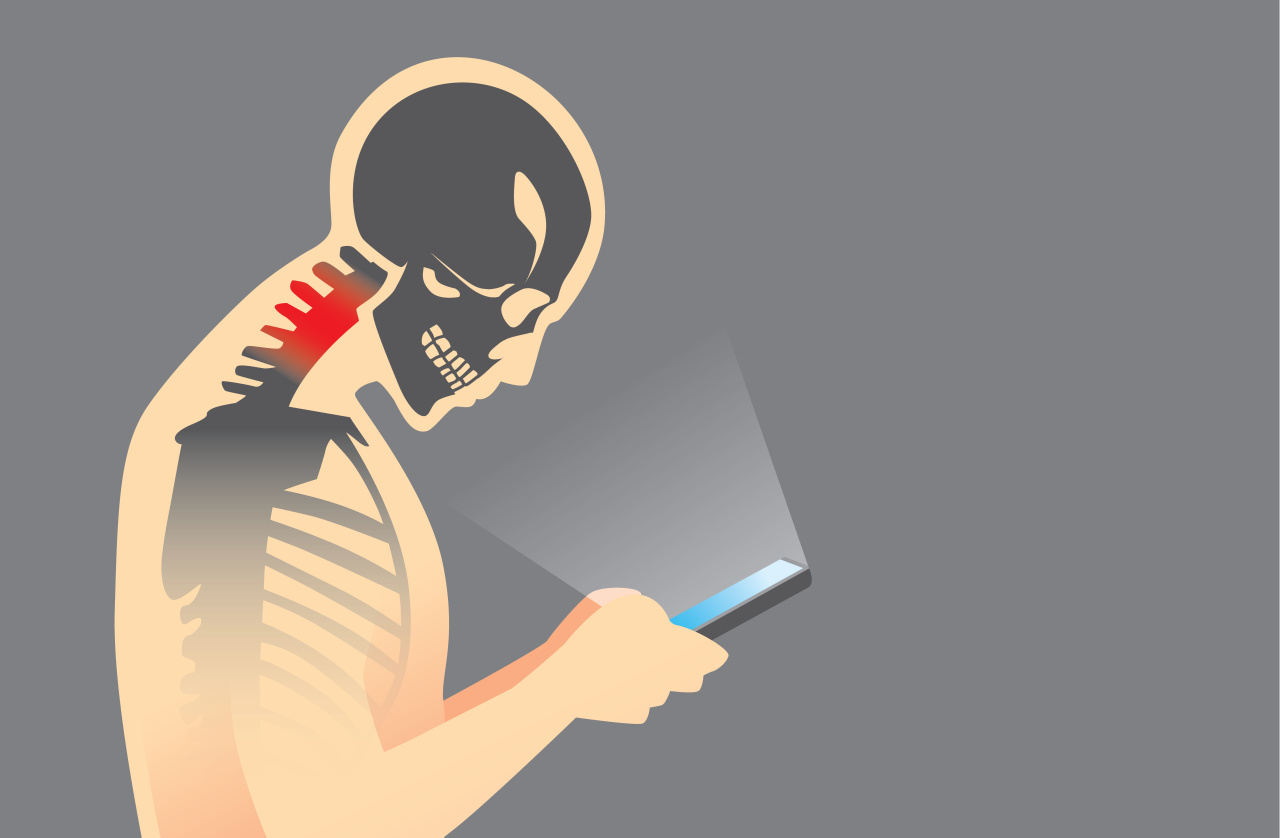Too much time on smartphone poses health threat
Overusing your smartphone may wreck your health, experts say
By Kim ArinPublished : Nov. 18, 2019 - 18:36
More people are falling ill from spending too much time on mobile screens.
Last month Rep. Kim Kwang-soo of the National Assembly’s health and welfare committee said “smartphone maladies” are taking a toll on public health, calling for a government-level response.
The lawmaker said South Korea has the highest rate of smartphone ownership in the world, citing a 2018 report by US-based think tank the Pew Research Center, which in turn has led to an increase in health problems arising from excessive smartphone use.
“Health authorities should come up with measures to deal with possible health effects that come with newly emerging technologies,” he said.
Health Insurance Review and Assessment Service data shows the number of patients diagnosed with “smartphone-related diseases” has nearly doubled over the past five years.
Last month Rep. Kim Kwang-soo of the National Assembly’s health and welfare committee said “smartphone maladies” are taking a toll on public health, calling for a government-level response.
The lawmaker said South Korea has the highest rate of smartphone ownership in the world, citing a 2018 report by US-based think tank the Pew Research Center, which in turn has led to an increase in health problems arising from excessive smartphone use.
“Health authorities should come up with measures to deal with possible health effects that come with newly emerging technologies,” he said.
Health Insurance Review and Assessment Service data shows the number of patients diagnosed with “smartphone-related diseases” has nearly doubled over the past five years.

Smartphone diseases identified by the state health insurance program include text neck syndrome, dry eye syndrome, insomnia and carpal tunnel syndrome.
In 2018, medical expenses for the four diseases amounted to 433.4 billion won ($372.3 billion), a 46.8 percent jump from 2014’s 295.3 billion won. The number of patients in need of treatment for these conditions totaled 5,462,746, an increase of 14.8 percent over the same period.
Roh Young-hak, an orthopedic surgeon at Ewha Womans University Medical Center, said while using handheld devices was not the sole cause of “text neck,” it may be more common among mobile users.
“More people spend time hunched over a smartphone, than say, a book,” he said.
According to the data presented by the lawmaker, insomnia was the condition that saw the most drastic surge, from 461,790 in 2014 to 597,529 in 2018.
Lee Hyang-woon, a neurologist at the same hospital’s sleep center, said exposure to light in the evening “severely inhibits sleep” by interfering with the production of a sleep hormone known as melatonin.
“The greater the intensity of light from smartphone screens, and the longer you are exposed to it, the more likely you will experience sleep disturbance and reduced quality of sleep,” she said.
In extreme cases, this can develop into a disorder known as delayed sleep phase syndrome, which is a chronic disruption of a person’s biological clock. Treatment involves phototherapy as well as cognitive behavioral therapy, to help patients cut back on late-night smartphone usage.
Lee said she recommends refraining from using smartphones or other electronic devices at least two hours prior to going to bed.
“Anti-blue light filters or glasses can also help,” she said.
Lee said she has seen a growing number of patients complaining of sleep difficulties due to bedtime smartphone use in recent years, a condition more commonly observed in teenagers.
The government has offered prevention and rehabilitation programs for adolescent internet addiction since 2005. In 2014, the first care and treatment facility dedicated to problematic smartphone use by teenagers was launched by the Ministry of Gender Equality and Family, which oversees youth policies.
In 2018 alone, some 40,000 teens with overdependence on smartphones have visited counseling centers run by the ministry.
The head of the ministry’s youth protection division, Kim Sung-byuk, said the age when patients start to show signs of smartphone overuse is getting younger by the year.
“The number of grade school kids showing symptoms of smartphone dependency has risen for three consecutive years, according to 2019 data,” he said.
“Children younger than 2 should not be exposed to screens, experts say, and less than an hour a day under adult supervision for those 5 or younger.”
As for the impact of smartphones on eye health, the volume of research is not sufficient to establish a connection, according to ophthalmologist Bae Hyung-won at Severance Hospital.
But uninterrupted smartphone use for a sustained period of time can cause eye fatigue and dryness, he said.
“Dry eyes is an eye disease most commonly linked with smartphone overuse,” he said, adding that it can be improved with rest and eye drops.
Lee Deok-jong, an addiction psychiatrist at the National Health Insurance Service Hospital in Ilsan, Goyang, Gyeonggi Province, said addictive behaviors associated with smartphones are not addictions to the device itself, but the services it makes available.
“Smartphones, as well as other digital devices, are just the medium through which addictions to content available on the platform are accessed,” he said.
He said, however, that in clinical observations, overdependence on smartphones is often linked with addictive use of social media, several of whose symptoms overlap with those observed in conditions such as depression and attention deficit hyperactivity disorder.
“Smartphone overuse cannot be considered a stand-alone mental health problem. Oftentimes, individuals who show signs of (smartphone) dependency suffer from other existing conditions,” he said.
(arin@heraldcorp.com)









![[Kim Seong-kon] Democracy and the future of South Korea](http://res.heraldm.com/phpwas/restmb_idxmake.php?idx=644&simg=/content/image/2024/04/16/20240416050802_0.jpg&u=)








![[KH Explains] Hyundai's full hybrid edge to pay off amid slow transition to pure EVs](http://res.heraldm.com/phpwas/restmb_idxmake.php?idx=652&simg=/content/image/2024/04/18/20240418050645_0.jpg&u=20240418181020)

![[Today’s K-pop] Zico drops snippet of collaboration with Jennie](http://res.heraldm.com/phpwas/restmb_idxmake.php?idx=642&simg=/content/image/2024/04/18/20240418050702_0.jpg&u=)